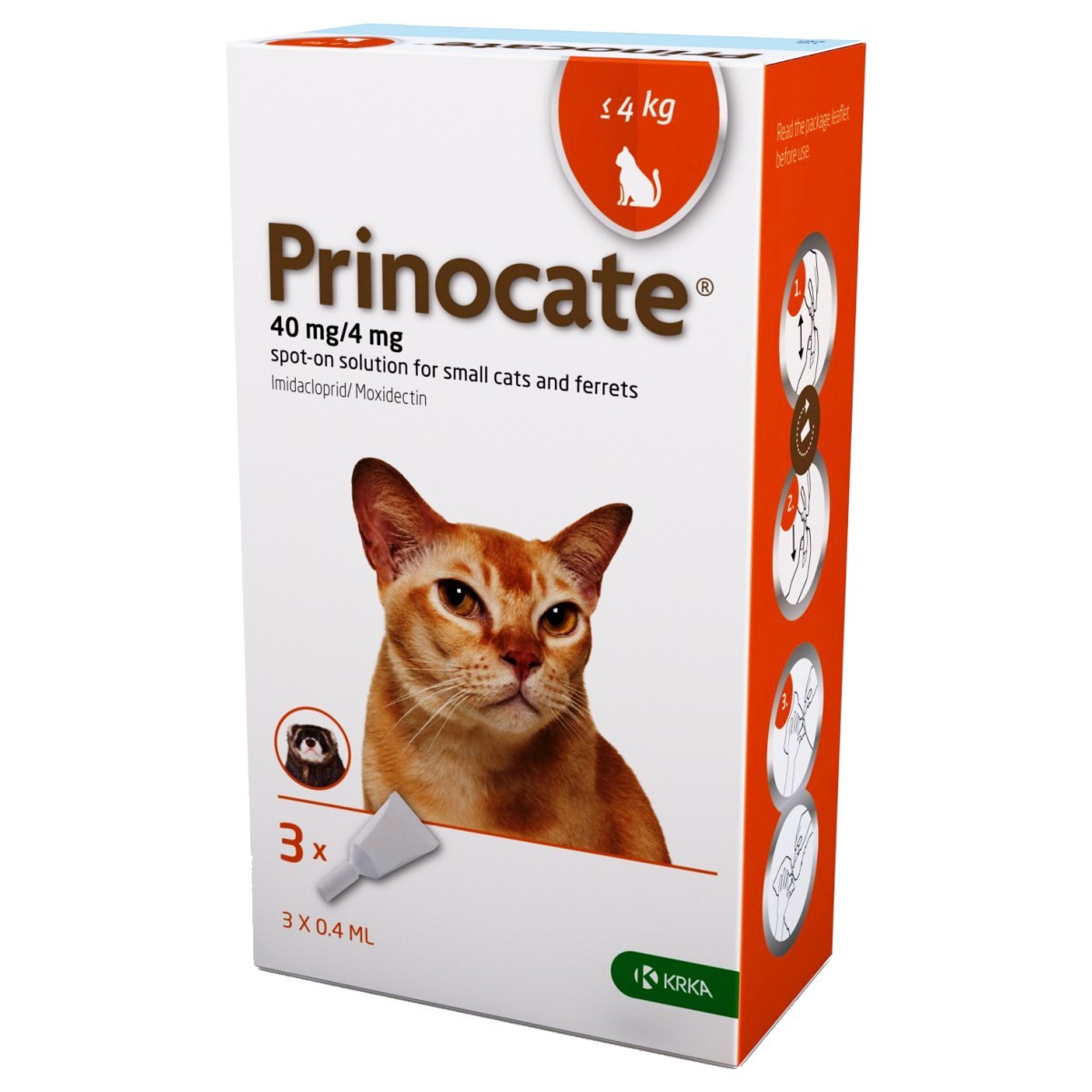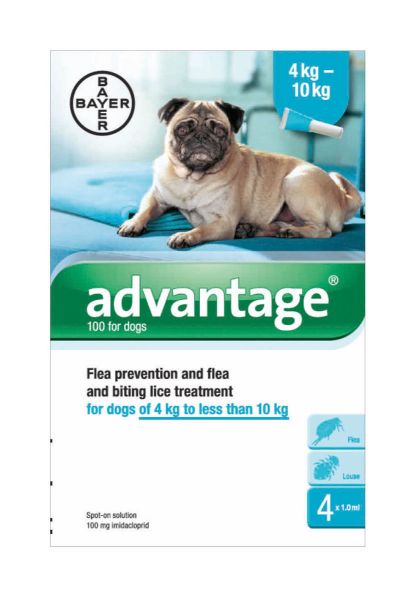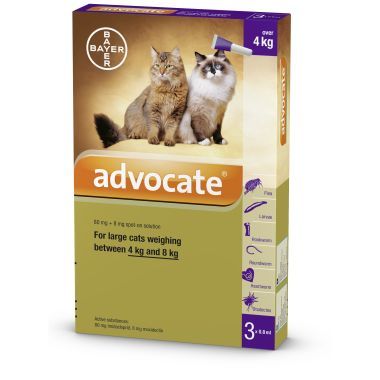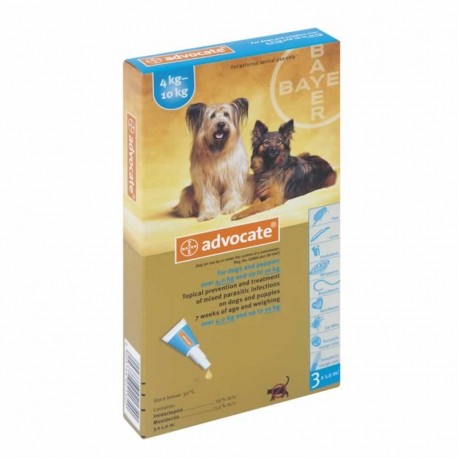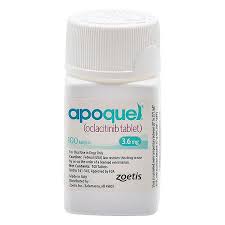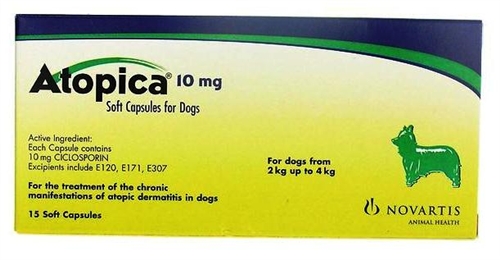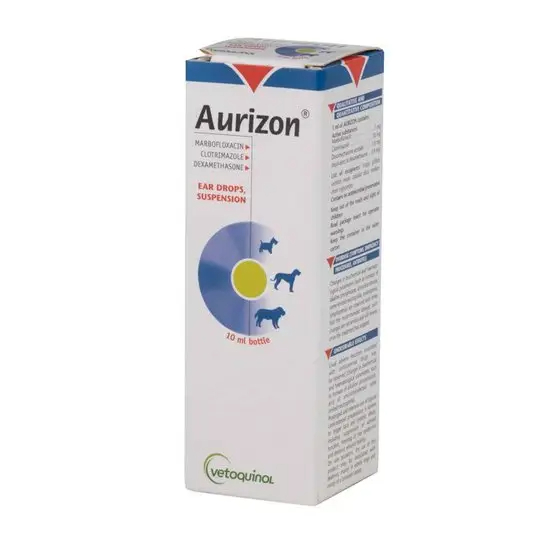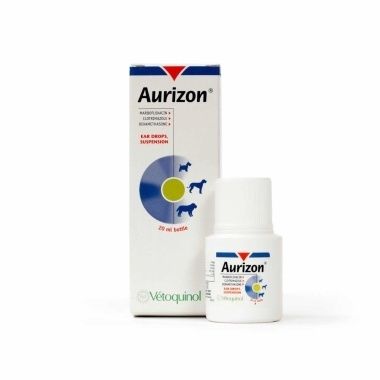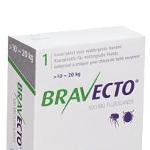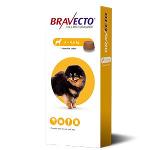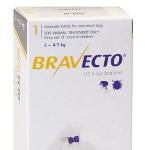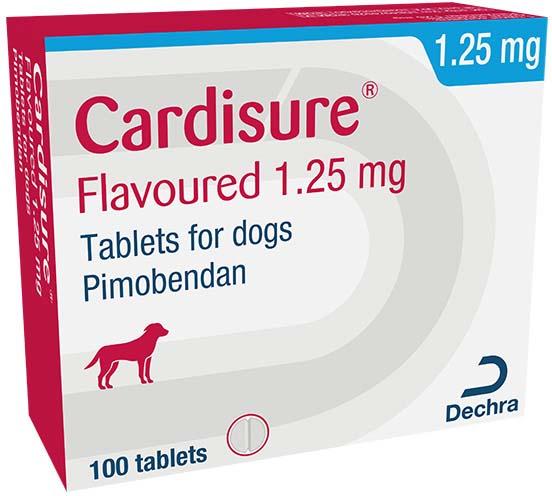Prinocate spot-on solution for cats and dogs Species: Cats, Dogs Active ingredient: Imidacloprid, Moxidectin Product:Prinocate spot-on solution for cats and dogs Product index: Prinocate spot-on solution for cats and dogs Presentation Clear, slightly yellow to brownish yellow spot on solution. Description: prinocate presentation Uses Cats and dogs: For dogs and cats suffering from, or at risk from, mixed parasitic infections: Flea treatment and prevention (Ctenocephalides felis): One treatment prevents future flea infestation for 4 weeks. Pre-existing pupae in the environment may emerge for 6 weeks or longer after treatment is initiated, depending upon climatic conditions. Therefore, it may be necessary to combine treatment with this veterinary medicinal product with environmental treatments aimed at breaking the flea life cycle in the surroundings. This can result in a more rapid reduction in the household flea population. Administer at monthly intervals when used as part of a treatment strategy for flea allergy dermatitis Treatment of ear mite infestation (Otodectes cynotis): administer a single dose. Loose debris should be gently removed from the external ear canal at each treatment. A further veterinary examination 30 days after treatment is recommended as some animals may require a second treatment. Do not apply directly to the ear canal. Cats: Treatment of notoedric mange (Notoedres cati): Administer a single dose. Treatment of the lungworm Eucoleus aerophilus (syn. Capillaria aerophila) (adults): Administer a single dose. Prevention of Aelurostrongylus abstrusus: Administer a single dose. Treatment of Aelurostrongylus abstrusus: Administer monthly for three consecutive months. Treatment of the eye worm Thelazia callipaeda (adults): Administer a single dose. Heartworm prevention (Dirofilaria immitis): Cats in areas endemic for heartworm, or those which have travelled to endemic areas, may be infected with adult heartworms. For prevention of heartworm disease, the product must be applied at regular monthly intervals during the time of the year when mosquitoes (the intermediate hosts which carry and transmit heartworm larvae) are present. The product may be administered throughout the year or at least 1 month before the first expected exposure to mosquitoes. Treatment should continue at regular monthly intervals until 1 month after the last exposure to mosquitoes. To establish a treatment routine, it is recommended that the same day or date be used each month. When replacing another heartworm preventative product in a heartworm prevention programme, the first treatment with this product must be given within 1 month of the last dose of the former medication. In non-endemic areas there should be no risk of cats having heartworm. Therefore they can be treated without special precautions. Roundworm and hookworm treatment (Toxocara cati and Ancylostoma tubaeforme): In areas endemic for heartworm, monthly treatment may significantly reduce the risk of re-infection caused by the respective roundworms and hookworms. In areas non-endemic for heartworm, the product can be used as part of a seasonal prevention programme against fleas and gastrointestinal nematodes. Dogs: Treatment of sarcoptic mange (caused by Sarcoptes scabiei var. canis): Administer a single dose twice, 4 weeks apart. Prevention of heartworm disease (D. immitis) and cutaneous dirofilariosis (skinworm) (D. repens): Dogs in areas endemic for heartworm, or those which have travelled to endemic areas, may be infected with adult heartworms. Therefore prior to treatment with the veterinary medicinal product, a risk –benefit analysis must be observed. For prevention of heartworm disease and cutaneous dirofilariosis, the product must be applied at regular monthly intervals during the time of the year when mosquitoes (the intermediate hosts which carry and transmit D. immitis and D. repens larvae) are present. The product may be administered throughout the year or at least 1 month before the first expected exposure to mosquitoes. Treatment should continue at regular monthly intervals until 1 month after the last exposure to mosquitoes. To establish a treatment routine, it is recommended that the same day or date be used each month. When replacing another heartworm preventative product in a heartworm prevention programme, the first treatment with this veterinary medicinal product must be given within 1 month of the last dose of the former medication. In non-endemic areas there should be no risk of dogs having heartworm. Therefore, they can be treated without special precautions. Treatment of microfilariae (D. immitis): Administer monthly for two consecutive months. Treatment of cutaneous dirofilariosis (skin worm) (adult stages of Dirofilaria repens): Administer monthly for six consecutive months. Reduction of microfilariae (skin worm) (D. repens): Administer monthly for four consecutive months. Treatment and prevention of Angiostrongylus vasorum: Administer a single dose. A further veterinary examination 30 days after treatment is recommended as some animals may require a second treatment. In endemic areas regular monthly applications will prevent angiostrongylosis and patent infection with Angiostrongylus vasorum. Treatment of Crenosoma vulpis: Administer a single dose. Prevention of spirocercosis (Spirocerca lupi): Administer monthly. Treatment of Eucoleus (syn. Capillaria) boehmi (adults): Administer monthly for two consecutive months. It is advisable to prevent auto-coprophagia between the two treatments in order to prevent possible reinfection. Treatment of the eye worm Thelazia callipaeda (adults): Administer a single dose. Roundworm, hookworm and whipworm treatment (Toxocara canis, Ancylostoma caninum, Uncinaria stenocephala, Toxascaris leonina and Trichuris vulpis): In areas endemic for heartworm, monthly treatment may significantly reduce the risk of re-infection caused by the respective round-, hook- and whipworms. In areas non-endemic for heartworm, the product can be used as part of a seasonal prevention programme against fleas and gastrointestinal nematodes. Studies have shown that monthly treatment of dogs will prevent infections caused by Uncinaria stenocephala. Dosage and administration Description: prinocate dosage 1. Remove one pipette from the package. Hold applicator pipette in an upright position, twist and pull cap off. 2. Turn the cap around and place the other end of cap back on pipette. Push and twist the cap to break seal, and then remove the cap from the pipette. 3. With the dog/cat standing still, part the coat between the shoulder blades until the skin is visible. The product should only be applied to undamaged skin. Place the tip of the pipette on the skin and squeeze firmly several times to empty the contents directly onto the skin. Description: prinocate dog Description: prinocate cat Use during pregnancy, lactation: The safety of the veterinary medicinal product has not been established during pregnancy and lactation. Laboratory studies with either imidacloprid or moxidectin in rats and rabbits have not produced any evidence of teratogenic, foetotoxic or maternotoxic effects. Use only according to the benefit-risk assessment by the responsible veterinarian. Contra-indications, warnings, etc Contraindications: Do not use in puppies under 7 weeks of age. Do not use in kittens under 9 weeks of age. Do not use in cases of hypersensitivity to the active substances or to any of the excipients. Do not use in dogs classified as Class 4 for heartworm disease as the safety of the product has not been evaluated in this animal group. For cats, the corresponding veterinary medicinal product (0.4 or 0.8 ml), which contains 100 mg/ml imidacloprid and 10 mg/ml moxidectin, must be used. For ferrets: Do not use the veterinary medicinal product for dogs. Only the product for small cats and ferrets (0.4 ml) should be used. Do not use on canaries. Special warnings for each target species: Brief contact of the animal with water on one or two occasions between monthly treatments is unlikely to significantly reduce the efficacy of the product. However, frequent shampooing or immersion of the animal in water after treatment may reduce the efficacy of the product. Parasite resistance to any particular class of anthelmintic may develop following frequent, repeated use of an anthelmintic of that class. Therefore, the use of this product should be based on the assessment of each individual case and on local epidemiological information about the current susceptibility of the target species in order to limit the possibility of a future selection for resistance. The use of the product should be based on the confirmed diagnosis of mixed infection (or risk of infection, where prevention applies) at the same time. Efficacy against adult Dirofilaria repens has not been tested under field conditions. Special precautions for use in animals: The treatment of animals weighing less than 1 kg should be based on a benefit-risk assessment. There is limited experience on the use of the product in sick and debilitated animals, thus the product should only be used based on a benefit-risk assessment for these animals. Care should be taken that the contents of the pipette or the applied dose does not come into contact with the eyes or mouth of the recipient and/or other animals. Do not allow recently treated animals to groom each other. The product should only be applied to undamaged skin. This product contains moxidectin (a macrocyclic lactone), therefore special care should be taken with Collie or Old English Sheep dogs and related breeds or crossbreeds, ensure correct administration in particular, prevent oral uptake by the recipient and/or other animals in close contact should be prevented. The safety of the product has only been evaluated in dogs classified as either Class 1 or 2 for heartworm disease in laboratory studies and in a few Class 3 dogs in a field study. Therefore, the use in dogs with obvious or severe symptoms of the disease should be based on a careful benefit-risk assessment by the treating veterinarian. Although experimental over dosage studies have shown that the product may be safely administered to dogs infected with adult heartworms, it has no therapeutic effect against adult Dirofilaria immitis. It is therefore recommended that all dogs 6 months of age or more, living in areas endemic for heartworm, should be tested for existing adult heartworm infection before being treated with the product. At the discretion of the veterinarian, infected dogs should be treated with an adulticide to remove adult heartworms. The safety of the combination of imidacloprid and moxidectin has not been evaluated when administered on the same day as an adulticide. Imidacloprid is toxic for birds, especially canaries. User safety: In order to prevent children from getting access to pipettes, keep the pipette in the original packaging until ready for use and dispose of used pipettes immediately. Do not ingest. In case of accidental ingestion, seek medical advice immediately and show the package leaflet or the label to the physician. People with a known hypersensitivity to benzyl alcohol, imidacloprid or moxidectin should administer the product with caution. In very rare cases, the product may cause skin sensitisation or transient skin reactions (for example numbness, irritation or burning/tingling sensation). In very rare cases, the product may cause respiratory irritation in sensitive individuals. If the product accidentally gets into eyes, they should be thoroughly flushed with water. Avoid contact with skin, eyes or mouth. In case of accidental spillage onto skin, wash off immediately with soap and water. Wash hands thoroughly after use. If skin or eye symptoms persist, seek medical advice immediately and show the package leaflet or label to the physician. Do not eat, drink or smoke during application. Treated animals should not be handled, especially by children, until the application site is dry. Therefore, it is recommended to apply the product in the evening. Recently treated animals should not be allowed to sleep in the same bed as their owner, especially children. Other precautions: The solvent in the product may stain or damage certain materials including leather, fabrics, plastics and finished surfaces. Allow the application site to dry before permitting contact with such materials. The product should not enter watercourses as it has harmful effects on aquatic organisms: moxidectin is highly toxic to aquatic organisms. Dogs should not be allowed to swim in surface waters for 4 days after treatment. Pharmaceutical precautions Interactions: During treatment with the product, no other antiparasitic macrocyclic lactone should be administered. No interactions between imidacloprid/moxidectin combination and routinely used veterinary medicinal products or medical or surgical procedures have been observed. Safety of the product when administered on the same day as an adulticide to remove adult heartworms has not been evaluated. Environmental safety: The product should not enter water courses as this may be dangerous for fish and other aquatic organisms. Any unused veterinary medicinal product or waste materials derived from such veterinary medicinal product should be disposed of in accordance with local requirements. Shelf life: 2 years Legal category Legal category: POM-V

